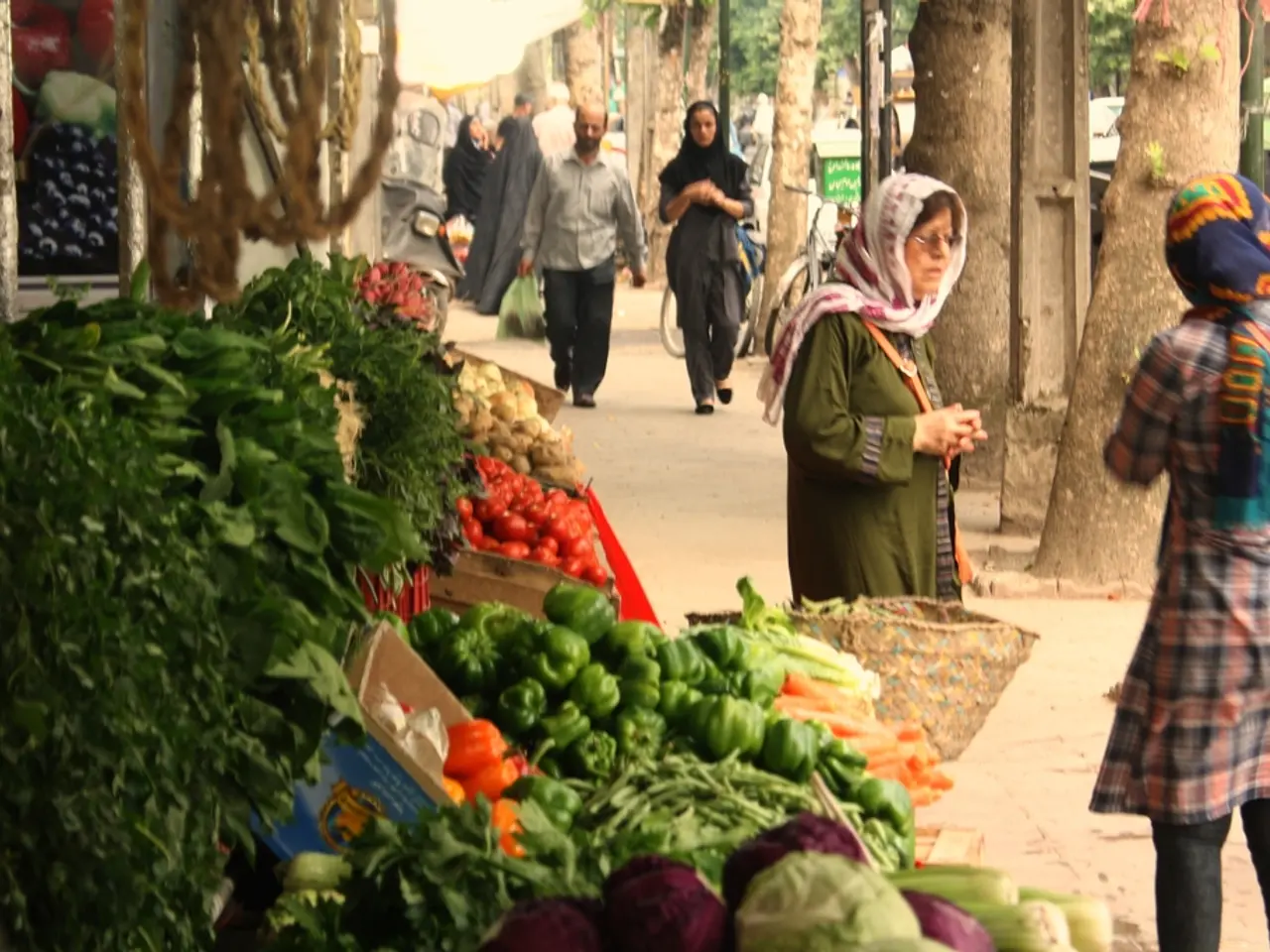County introduces policy strategies to combat malnourishment
Busia County, Kenya, has taken a significant step towards improving the health and well-being of its residents, particularly those in rural areas, by launching two policy frameworks aimed at addressing malnutrition and improving household diets. The Busia County Nutrition Action Plan (CNAP) 2023/2024–2027/2028 and the County Agri-Nutrition Implementation Strategy (CANIS I) 2023-2027 were unveiled recently, marking a crucial milestone in the fight against malnutrition.
Scholastica Navade, Busia County Director of Nutrition, expressed her optimism, stating that these frameworks will ensure children grow in a dignified, equitable environment. Navade emphasised the importance of a multisectoral approach, promoting collaboration across sectors such as health, agriculture, education, and social protection to tackle the social determinants of malnutrition sustainably.
The Busia CNAP 2023/2024–2027/2028 is the second-generation CNAP, highlighting an advancement in strategy from earlier efforts. It specifically targets nutrition security, aiming to improve the quality and diversity of diets at the household level. The plan includes components that link nutrition with agriculture through CANIS I, ensuring that agricultural productivity and food diversity contribute effectively to better nutrition outcomes.
County Agriculture chief Simplicius Mukok emphasised the prioritisation of nutritious crops, such as nyota beans and African leafy vegetables, to improve diets, especially in rural areas where malnutrition remains a concern. Mukok noted that the county is making deliberate investments in nutritious crop production to improve household diets.
Susan Outa, the Busia County Chief Officer for Health Services and Sanitation, described nutrition as a cross-cutting development agenda. Outa mentioned challenges such as underfunding, poor data use, and vulnerability to emergencies like drought and pandemics. However, she expressed confidence that the new policy frameworks will support sustainable interventions that can have long-term positive effects on reducing malnutrition rates and enhancing dietary quality in rural Busia.
The launch of the policy frameworks is a major step toward a malnutrition-free future, according to Navade. She called on all county departments to align their strategies with the newly launched policies and emphasised the need to mainstream nutrition into budgets and work plans. Navade also urged that nutrition is a matter of human rights and equity.
Navade emphasised that the frameworks will empower community health promoters to guide families on healthy food choices. However, for the frameworks to succeed, the County Assembly must now legislate and fund these initiatives. Navade stated that without moving from strategy to action, the fight against malnutrition is lost.
The Busia County Nutrition Action Plan 2023/2024–2027/2028 represents a comprehensive and collaborative effort that targets malnutrition by improving food security, dietary diversity, and nutrition education in rural areas. By integrating agriculture with nutrition, the CNAP encourages the diversification of household diets through the promotion of nutrient-rich crops and improved food production techniques. The plan aims to reduce undernutrition and micronutrient deficiencies by increasing the availability and consumption of diverse food groups. Its multisector collaboration also addresses underlying factors of malnutrition, such as poverty, food insecurity, and lack of knowledge on nutrition, thereby improving the overall health and well-being of rural households.
[1] Busia County Government. (2023). Busia County Nutrition Action Plan 2023/2024–2027/2028. Retrieved from [www.busiacounty.go.ke/cnap](http://www.busiacounty.go.ke/cnap)
[2] Kenya Food Security Network. (2023). County Agri-Nutrition Implementation Strategy (CANIS I) 2023–2027. Retrieved from [www.kenyafoodsecuritynetwork.org/canis](http://www.kenyafoodsecuritynetwork.org/canis)
[3] World Food Programme. (2023). Nutrition in Busia County: A Snapshot. Retrieved from [www.wfp.org/kenya/busia-county](http://www.wfp.org/kenya/busia-county)
[4] UNICEF. (2023). Malnutrition in Kenya: The Facts and Solutions. Retrieved from [www.unicef.org/kenya/nutrition](http://www.unicef.org/kenya/nutrition)
- The recent launch of the Busia County Nutrition Action Plan (CNAP) and the County Agri-Nutrition Implementation Strategy (CANIS I) signify a significant stride in the world news of health and well-being, particularly in rural areas of Busia County, Kenya.
- These policy frameworks aim to address malnutrition and improve household diets, and Scholastica Navade, the Busia County Director of Nutrition, is optimistic about their impact on the health and well-being of residents.
- Navade emphasizes the importance of a multisectoral approach, promoting collaboration among sectors like health, agriculture, education, and social protection.
- The Busia CNAP 2023/2024–2027/2028 is an advancement in strategy, targeting nutrition security and aiming to improve the quality and diversity of diets at the household level.
- The newframeworks specifically target malnutrition, focusing on improving food security, dietary diversity, and nutrition education in rural areas.
- The plan links nutrition with agriculture through CANIS I, ensuring that agricultural productivity and food diversity contribute effectively to better nutrition outcomes.
- County Agriculture chief Simplicius Mukok has underscored the prioritization of nutritious crops, such as nyota beans and African leafy vegetables, to improve diets in rural areas.
- The county is investing in nutritious crop production to improve household diets and address malnutrition.
- Susan Outa, the Busia County Chief Officer for Health Services and Sanitation, has described nutrition as a cross-cutting development agenda.
- Challenges such as underfunding, poor data use, and vulnerability to emergencies like drought and pandemics exist, but she remains confident that the new policy frameworks will support sustainable interventions.
- The launch of the policy frameworks is a major step toward a malnutrition-free future, according to Navade.
- Navade calls on all county departments to align their strategies with the newly launched policies and emphasizes the need to mainstream nutrition into budgets and work plans.
- The frameworks will empower community health promoters to guide families on healthy food choices, but their success depends on legislating and funding these initiatives.
- Navade urges a transition from strategy to action to ultimately win the fight against malnutrition.
- The Busia County Nutrition Action Plan represents a comprehensive and collaborative effort that encourages the diversification of household diets.
- The plan promotes nutrient-rich crops and improved food production techniques, with the goal of reducing undernutrition and micronutrient deficiencies.
- The multisector collaboration addresses underlying factors of malnutrition, including poverty, food insecurity, and lack of knowledge on nutrition.
- By improving the overall health and well-being of rural households, these policy frameworks aim to enhance lifestyle, promoting health and wellness in the epaper.
- The new strategies may have significant implications for the environmental science sector, as they focus on sustainable agriculture and reduce the impact on the environment.
- The manufacturing industry may be affected, as nutritious crops play a crucial role in the establishment of productivity in the region.
- Mens-health may benefit from the improved dietary quality and health outcomes, aligning with the broader goal of workplace-wellness and environmental-science.
- Skin-care may also see a positive impact, as proper nutrition contributes to overall health and the appearance of one's skin.
- Aging adults may find weakened immune systems and nutrient deficiencies corresponding consequences of malnutrition, making this a critical issue in the aging population.
- Womens-health is inextricably linked to nutrition, and the new strategies can advance womens-health and well-being in the region.
- The industry sector can play a role in supporting these initiatives, particularly through philanthropy and corporate social responsibility.
- medicare may also contribute to the success of these frameworks, as proper nutrition is essential for the health and well-being of seniors.
- CBD, a popular wellness supplement, may have an indirect impact on the success of these strategies, as it can assist with stress management and promoting overall health.
- The financial industry, including the areas of venture-capital, personal-finance, and wealth-management, can support small-businesses that focus on sustainable agriculture and nutrition.
- The new measures may also contribute to the growth of the retail sector, as a more nutritious population may spur demand for healthier food options.
- Entrepreneurship opportunities abound in the fields of nutrition, agriculture, and wellness, as the demand for nutritious food and holistic health practices continues to grow.








